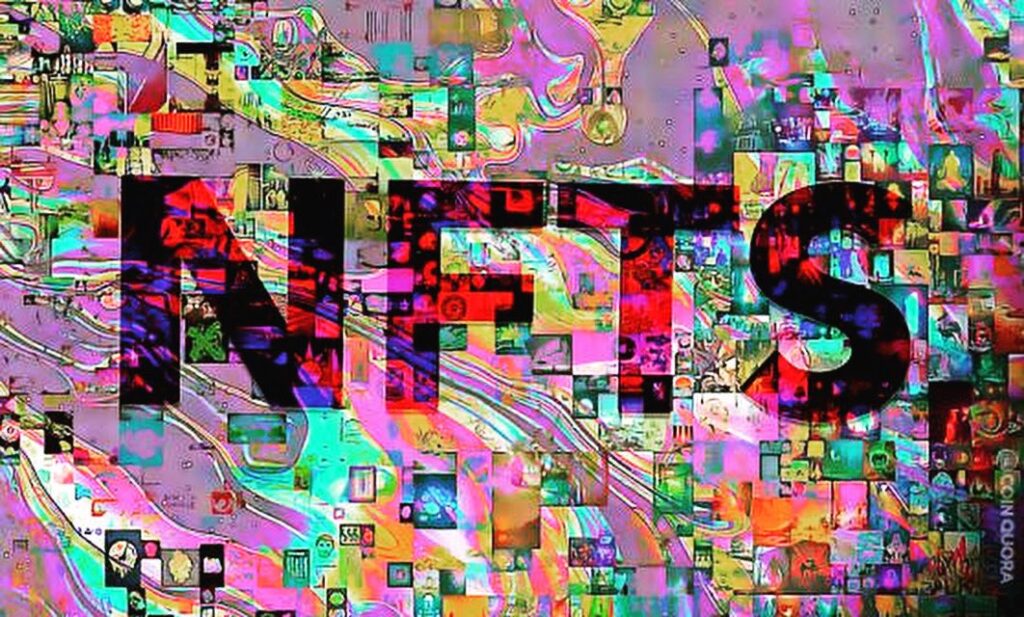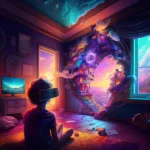
Non-fungible tokens, or NFTs, have exploded onto the scene in recent years, garnering attention from artists, collectors, and investors alike. But what exactly are Non-fungible tokens and how people use them? This article will explore the history and uses of Non-fungible tokens, as well as their potential to transform the way we think about digital property and value.

NFTS
But first, a quick explanation of what Non-fungible tokensare: they are unique digital assets that are verified on a blockchain, the same technology that powers cryptocurrencies like Bitcoin. This makes NFTs unique and one-of-a-kind, unlike traditional digital assets which can be easily copied and replicated.
Early History of NFTs
The first NFTs to gain widespread attention were Cryptokitties. They were virtual cats that people bought, sold, and bred using Ethereum, a popular cryptocurrency. These cute and quirky collectibles quickly became a phenomenon, with some selling for tens of thousands of dollars. However, it wasn’t until the explosion of the DeFi (decentralized finance) market in 2020 that NFTs really took off, with many artists, musicians, and even professional sports teams creating and selling their own NFTs.
One of the main attractions of Non-fungible tokens is the ability to prove ownership and authenticity of a digital asset. In the past, it was easy to copy and distribute digital art, music, and other media, making it difficult for creators to make money and maintain control over their work. NFTs solve this problem by creating a unique, verifiable record of ownership on the blockchain. This not only allows creators to sell their work directly to collectors, but it also opens up new possibilities for licensing and royalty payments.
Modern Adoption of Digital Collectables
NFTs are also being used to create new forms of art and entertainment. For example, some artists are creating interactive NFTs that can change or evolve over time, creating a new level of engagement and immersion for collectors. Musicians are also using NFTs to sell exclusive experiences, such as virtual concerts or meet-and-greets, and sports teams are selling NFTs that allow fans to own a piece of their favorite players and teams.
Of course, the rise of Non-fungible tokenshas also sparked controversy and debate. Some have questioned the environmental impact of the energy-intensive blockchain technology, while others have raised concerns about the potential for fraud and speculation. It’s also worth noting that the NFT market is still relatively young and volatile, with prices for some NFTs reaching astronomical levels, only to crash shortly thereafter.
Despite these challenges, it’s clear that NFTs are here to stay and are changing the way we think about digital ownership and value. While it may be too early to say exactly how NFTs will shape the future, it’s clear that they have the potential to revolutionize the way we create, collect, and consume digital media.
So whether you’re an artist looking to sell your work directly to collectors, a collector looking to own a unique piece of digital art, or just someone interested in the potential of NFTs, it’s worth taking the time to learn more about this exciting and rapidly-evolving market.
In this beginner’s guide, we’ll take a closer look at NFTs and how they’re changing the way we think about digital ownership and collectability.
What exactly are NFTs?
Non-fungible tokens, or NFTs, are a type of digital asset that is unique and we cannot replace it with another identical item. This is in contrast to traditional cryptocurrencies like Bitcoin, which are interchangeable and we can exchange them for other coins or assets.
NFTs use the blockchain technology, which is a decentralized, distributed ledger that records transactions and ensures the integrity and security of the data. This means that NFTs are a secure, transparent, and verifiable way to represent and transfer ownership of digital assets.
NFTs can represent a wide range of digital assets, including art, collectibles, music, videos, and even virtual real estate. Essentially, any digital asset that has value and is authenticable as unique, we can turn itinto an NFT.
How do NFTs work?
We can create and trade NFTs on various blockchain platforms, such as Ethereum, EOS, and TRON. To create an NFT, an artist or creator must first design the digital asset and then mint it on the blockchain using a smart contract.
The smart contract serves as a digital agreement that defines the terms of the NFT, such as the ownership rights and any additional information about the asset. Once the NFT is minted, it becomes a unique and authenticated digital asset that can be traded and sold on the open market.
To buy or sell an NFT, you’ll need to use a cryptocurrency like Ethereum to pay for it. This is because NFTs are built on blockchain platforms that use cryptocurrency as the primary means of exchange.
Why are NFTs so popular?
NFTs have exploded in popularity in recent years, particularly in the art and collectibles market. This is because they offer a number of benefits for artists, collectors, and other stakeholders.
For artists, NFTs provide a new way to monetize their work and reach a wider audience. They can sell their digital art directly to collectors, rather than relying on galleries or other intermediaries. NFTs also offer a way for artists to retain ownership and control over their work, as the smart contract defines the terms of the sale and ensures that the artist is properly compensated.
For collectors, NFTs offer a new way to collect and own rare and unique digital assets. They can buy NFTs as investments or simply as a way to support their favorite artists. NFTs also provide a way for collectors to authenticate and verify the ownership and provenance of their digital assets, which can be difficult to do with traditional digital art.
Conclusion
Overall, NFTs offer a new and exciting way for artists and collectors to interact and transact in the digital world, and they have the potential to revolutionize the way we think about digital ownership and collectability.














